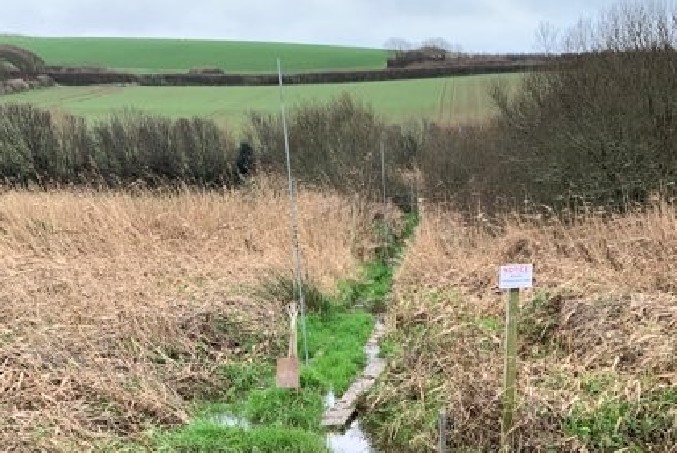
It’s not all about the ringing for me at South Milton Ley. There’s a lot of management, which goes on behind the scenes. Today representatives of Devon Birds and the Devon Wildlife Trust met in the car park at South Huish Reserve, together with individuals with monitoring expertise, to discuss collaborative working. I was invited along because of my involvement in the previous management plans but had little to contribute other than things which had already been documented.
When the group set off to walk along the coast path from South Huish to South Milton Ley it was my cue to slope off. I had work I wanted to do and, as it was too windy for nets, this presented the perfect opportunity. The 48 metres of Marsh Ride can be very productive for birds during the breeding season and migration periods. Too wet to traverse safely, except during last summer’s period of near drought, I had laid new boards along the length of the ride in the summer of 2017. Despite my best efforts, a mat of turf had gradually encroached on the boards since then and was threatening to completely engulf them, making access increasingly risky.
I had been aware of the issue for some time but the ride has been inaccessible throughout this winter due to high water levels and the access bridge being underwater for long periods. Nevertheless, during my previous two visits, I had managed to clear most of the boards in 10-minute slots between net rounds, piling the turf into multiple heaps along the length of the ride. Wet turf is surprisingly heavy and the freshly cleared boards, with a layer of wet sediment on their surface were like a skating rink. By today, the boards at the northern end of the ride were completely dry and the piles of turf more manageable. The southern end remains underwater but turf is less of an issue there because of this.


To cut a long story short, the ride is as clear as it’s been for the last six years, the boards are all visible, making access considerably safer and, flushed with success and not yet completely knackered, I decided to do a bit of work on Crest Ride at the eastern end of the ringing area. This is my second 48m net ride. Much less productive than Marsh Ride, it tends to catch mostly resident species but is good for Crests and Redwing in the winter, although anything can turn up. I had used it quite a lot in the early winter as it always remains accessible. One or two of the wooden posts anchoring guy ropes to the mist net poles were beginning to rot at their bases and becoming loose.
Fortunately, from my point of view, the National Trust had forced Devon Birds to replace the perimeter fencing at South Huish Reserve. Many of the original fence posts were in excellent condition and Nick Townsend had retrieved these and made some available. I’ve only hammered in two so far, with a couple more to do there and at Footpath Ride. Hopefully, I’ll get these done on my next visit before the ground dries out too much.


